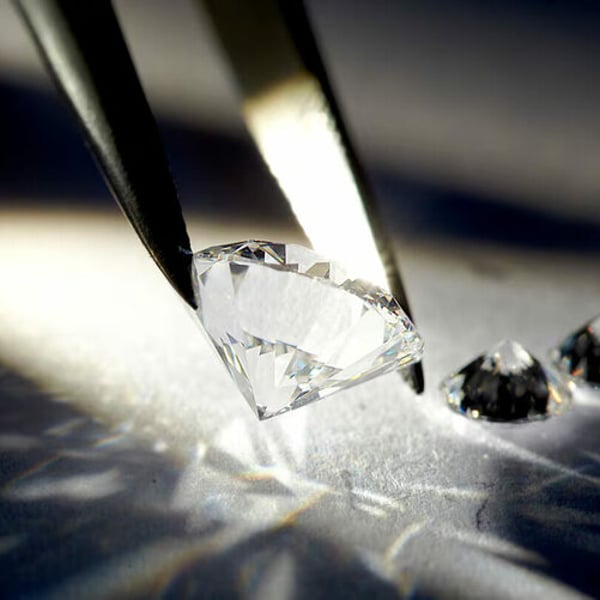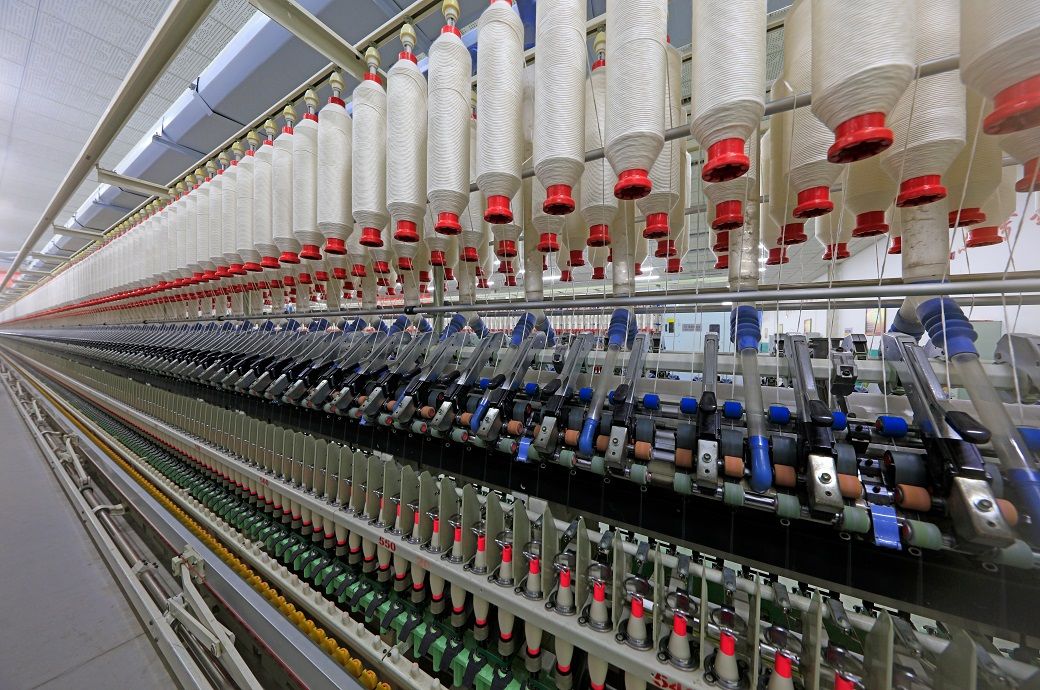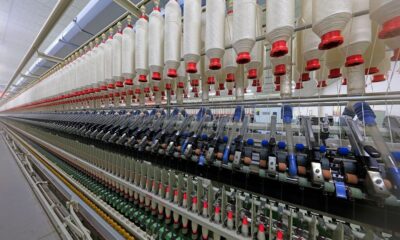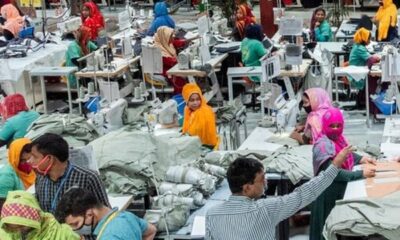Fashion
Lab-grown gems are robbing Botswana of its diamond riches

By
Bloomberg
Published
September 2, 2025
Across Botswana the lines of patients outside government clinics are lengthening, construction companies dependent on state jobs are firing workers and university students are threatening to boycott lectures after not getting the allowance increases they were promised.
The economic slowdown is a sharp reversal from just a few years ago when the world’s richest diamond deposits allowed the sparsely-populated desert nation of 2.5 million people to invest in free and efficient healthcare and plow money into funding tertiary education for students both at home and abroad. Its robust finances allowed it to provide for its citizens in a way that made it the envy of southern Africa.
The discovery of gems in 1967 transformed what was a rural backwater with, at the time of independence from the UK a year earlier, only a few miles of tarred road into the richest nation per capita on the sub-Saharan African mainland. Six decades later a diamond-market crisis has turned that find into an affliction and a cautionary tale of what can happen to an economy that becomes overly reliant on one commodity.
“For decades, we have leaned and relied heavily on diamonds. While they served us well, we know painfully today that this model has reached its limits,” President Duma Boko, 55, said in an August speech. “This is no longer an economic challenge alone; it is a national social existential threat.”
The market for natural diamonds is in crisis, with cut-price lab-grown equivalents hitting demand particularly hard in the US, the biggest market for the gems. They accounted for almost half of engagement ring purchases last year compared with 5% in 2019, according to jewelry insurer BriteCo Inc. The collapse of the luxury retail sector in China and the impact US tariffs have had on trade have also hurt the industry.
While lab gems can be produced in weeks or months, the formation of natural diamonds, made of crystallized carbon formed under extreme pressure and heat deep beneath the earth’s surface, can take billions of years before volcanic eruptions propel them upwards to depths where they can be mined or found on ocean or river beds. They also cost many times as much as their synthetic rivals.Their increasing popularity is creating the biggest disruption in the market since abundant alluvial diamonds were discovered on Namibia’s beaches early last century, causing prices to plunge, according to mining historian Duncan Money.
It’s choking off the revenue that accounts for 80% of Botswana’s exports and a third of government income. After repeated write-downs of its value Anglo American Plc is looking to sell De Beers, the world’s biggest diamond company that mines almost all of Botswana’s gems in a venture with the government.
Boko’s administration, which in October displaced a political party that had ruled since independence, is scrambling.
In July, the government engaged Malaysia’s PEMANDU Associates to advise on accelerating economic diversification and on Aug. 21 Boko took to Facebook to announce a plan for a little-known Qatari group, Al Mansour Holdings, to invest $12 billion. There was scant information about how the capital will be deployed and the same group has in recent weeks promised more than $100 billion in investment across six African countries, raising questions about the credibility of the pledge.
The president on Aug. 25 declared a public health emergency and implored pension funds and insurers to help fund the response. Government has frozen recruitment and there are shortages of medication, medical supplies and equipment, according to Kefilwe Selema, president of the Botswana Doctors Union.
“The situation is very bad,” said Galeemiswe Mosheti, a 42-year-old diabetes-sufferer who arrives at a government clinic in the capital Gaborone, at 8 a.m. and can wait as long as eight hours for his medicine compared with just an hour a year ago. “We’re spending long periods in the queue and our jobs suffer,’’ said the taxi driver who loses income every time he fetches waits to be attended to.
For construction companies dependent on government work the situation is no better.
“Most of our members have had to retrench workers,” said Tshotlego Kagiso, chairman of the Tshipidi Badiri Builders Association, the country’s largest building contractors organization, which before the current downturn had more than 800 members, some of whom can no longer afford their membership fees.
“The majority have suspended operations and many have closed altogether due to slower government spending,” he added, saying thousands of workers have lost their jobs without being able to be more specific.
The country’s economic statistics tell a story of rapid decline and belie De Beers’ marketing catchphrase, ‘A diamond is forever.’
The International Monetary Fund forecast Botswana’s 2025 fiscal deficit climbing to 11% of gross domestic product. That’s the largest budget gap since the global financial crisis in 2009, and the biggest in sub-Saharan Africa this year. Government debt will rocket to 43% of GDP in 2025, about doubling the ratio in just two years, according to data from the Washington-based lender, and exceeding a legislative limit.
In June, the finance ministry abandoned a forecast of 3.3% growth in 2025 and instead said the economy may contract 0.4%, foreign reserves have slumped 27% over the last year and Citigroup Inc. in July forecast Botswana will need to keep devaluing its managed currency, the pula. A first ever mid-term budget review is planned for as early as next month and Debswana, the country’s joint venture with De Beers, is operating at about 60% of capacity.
Botswana is “experiencing a significant decline in revenue inflows resulting in massive liquidity challenges that threaten financial stability and sustainability of government business operations,” Finance Ministry Permanent Secretary Tshokologo Kganetsano told a parliamentary committee in June.
Already, after years of limited borrowing, the country is turning to debt. It secured $304 million from the African Development Bank in May and $200 million from the OPEC fund in July and plans a domestic bond roadshow for investors on Tuesday. Its investment grade credit rating, the highest in Africa, is under threat with both Moody’s and S&P Global Ratings this year cutting its outlook to negative.
“The diamond sector is under severe pressure — both prices and volumes,” Ravi Bhatia, director and lead analyst at S&P Global Ratings, said in an interview. “They’re doing a combination of trying to diversify, fiscal consolidation and also austerity.”
While Botswana’s governments have been talking about economic diversification since the country’s first president, Seretse Khama, set up the Botswana Development Corp. in 1970 to develop copper mining and beef production, little progress has been made.
Tourism, focused on luxury safaris in the country’s Okavango Delta wetlands and a wilderness that boasts the world’s largest elephant population, is the second-biggest contributor after diamonds, accounting for just 12% of GDP. Some copper mines are being developed while huge coal deposits, barely exploited, can no longer attract the funding needed for extraction.
That’s left more than two fifths of the population under the age of 24 unemployed, according to the International Labour Organization, with the diamond mines only employing a few thousand people, and reliant on government largesse. That’s a situation Boko described as “a huge risk,” in a January interview with Bloomberg.
“We must now focus on job creation,” Boko said as he laid out ambitious plans for investment in renewable energy, technology and agriculture.
What he hadn’t bargained for was that there would be no money to pay for it.
While many other countries are reliant on a single commodity for the bulk of their earnings and go through cyclical downturns, for example oil-reliant Nigeria and Angola, for Botswana the outlook is bleaker.
“The difference with the oil cycle is that diamond prices are unlikely to ever come back,” said Charlie Robertson, author of The Time Travelling Economist, a book on how developing economies industrialize. “Its economic model is likely to cease being one of the shining lights on the African continent.”
Fashion
Canada’s suit imports fall in Jan-Aug as casualwear demand rises

Import volumes mirrored the same trend. Canada imported *.*** million units in the first eight months of ****, down from *.*** million units in the same period of ****. The average landed price dipped further to $**.** per suit, marking a cumulative decline of nearly ** per cent since ****, when the average stood at $**.** per unit, according to *fashion.com/market-intelligence/texpro-textile-and-apparel/” target=”_blank”>sourcing intelligence tool TexPro. Retailers have been moving towards lower-value assortments as consumers prioritise affordability, prompting sourcing shifts to cheaper origins and lower-spec tailoring.
The price reduction suggests increased competition, lower unit-value buying, and retailers favouring budget sourcing channels rather than premium tailoring suppliers—a response to elevated inventory pressures, cautious buying cycles, and slower store traffic for formalwear categories.
Fashion
How spinning sector strain is putting Bangladesh’s RMG might at risk

Bangladesh’s spinning sector is reportedly facing severe pressure from soaring costs, volatile cotton prices, and a surge in cheap yarn imports, even as industry leaders warned of potential shutdowns, risking millions of jobs.
In view of the existing scenario, stakeholders sought urgent support—gas price cuts, incentives, and anti-dumping measures to stabilise the sector.
Source link
Fashion
Indian rupee dips below 90 per US dollar mark for 1st time

It dropped to a record low of 90.13 against the US dollar, breaking its previous all-time low of 89.9475 touched a day earlier.
The Indian rupee fell sharply yesterday, dipping below past the crucial 90-per-US dollar level for the first time.
It dropped to a record low of 90.13 against the US dollar, breaking its previous all-time low of 89.9475 a day earlier.
The sharp fall in the rupee came amid weak trade and portfolio flows, restrained intervention by the central bank as well as the lack of clarity over a India-US trade deal.
The sharp fall in the rupee amid weak trade and portfolio flows, restrained intervention by the central bank as well as the lack of clarity over a India-US trade deal also weighed on domestic equity markets.
The development raised concerns about inflation and foreign investor activity.
The Reserve Bank of India’s monetary policy is expected to announce the interest rate decision on December 5.
Fibre2Fashion News Desk (DS)
-

 Sports3 days ago
Sports3 days agoIndia Triumphs Over South Africa in First ODI Thanks to Kohli’s Heroics – SUCH TV
-

 Fashion3 days ago
Fashion3 days agoResults are in: US Black Friday store visits down, e-visits up, apparel shines
-

 Entertainment3 days ago
Entertainment3 days agoSadie Sink talks about the future of Max in ‘Stranger Things’
-

 Tech4 days ago
Tech4 days agoGet Your Steps In From Your Home Office With This Walking Pad—On Sale This Week
-

 Politics3 days ago
Politics3 days agoElon Musk reveals partner’s half-Indian roots, son’s middle name ‘Sekhar’
-

 Tech3 days ago
Tech3 days agoPrague’s City Center Sparkles, Buzzes, and Burns at the Signal Festival
-
Uncategorized1 week ago
[CinePlex360] Please moderate: “Americans would
-

 Tech1 week ago
Tech1 week agoWake Up—the Best Black Friday Mattress Sales Are Here
















